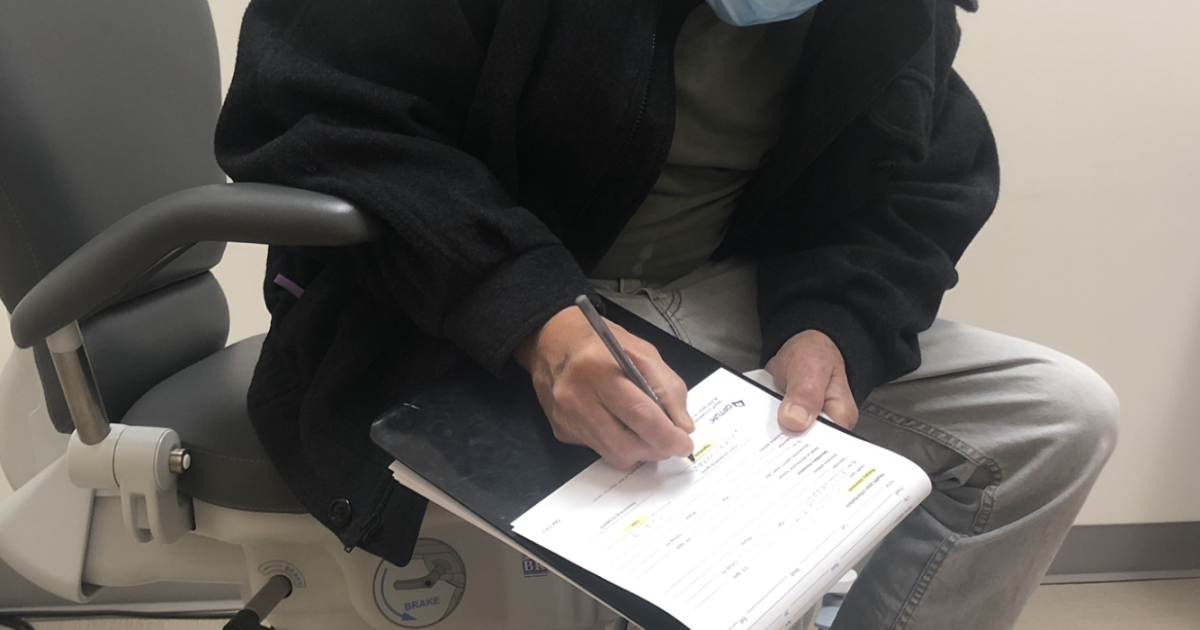Los Angeles —
Despite decades of work and effort toward a dignified old age, thousands of older adults in Los Angeles County are joining the ranks of the homeless. More than 18,000 people aged 55 or older are living on the streets, becoming the fastest growing group within this vulnerable sector.
Los Angeles resident Marianito C. Verdugo lost his construction job two years ago due to a broken back. The former worker receives compensation, but it is not enough to pay an apartment rent alone.
“A year ago I decided to live in my car, but without being able to sustain the expense that this entails either, since now I live on the street,” said the 69-year-old man, during a visit to the doctor.
According to advocates who support more funding for the homeless, the growing number of homeless seniors in Los Angeles County highlights the urgent need for more resources despite some successes.
“Last year, the number of people sleeping rough dropped by 5 percent in Los Angeles County and 10 percent in the city of Los Angeles; That means thousands of people no longer suffer the heat and elements alone, but can rest indoors and work with trained professionals to create their next chapter,” said Jennifer Hark Dietz, CEO of PATH (People Assisting the Homeless).
“This is all thanks to the investment that voters have made here in Los Angeles County. None of this would be possible without that support. But we know there is much more to do,” said Hark Dietz, referring to the elderly population, which is adding to the rapid increase in homelessness.
In the opinion of Bennie Tinson, executive director of the Licensed Adult Residential Care Associationwhich represents accommodation and care centers, the specific physical and mental health needs that some older adults require is also a factor that makes their search for housing difficult.
“As we age, we need more specific care due to illness or disability. Those who live on the streets are no exception,” Tinson said.
In fact, Mr. C. Verdugo has been looking for a job for two years, but according to him, due to his age and his condition of not being able to work long hours, the doors are closed to him.
“I dream of being able to have a place I call home again, even if it is a corner of a bed. I have family in Mexico and others live in Texas and Arizona. I am the only one who lives alone here in California, and no one can help me,” said C. Verdugo.
“I don’t like being a nuisance either… plus with my age I have to visit the doctor all the time, which leaves me less time working as a candy seller,” he said.
According to Tinson, both community organizations and the government must not only provide housing for this sector, they must also help ensure that they are housed in situations that support them and consider their needs.
“The more than 400 boarding and care centers do just that. However, without continued funding and continued investment, these facilities will not be able to meet growing demands. “We can’t let that happen,” Tinson said.
A key issue for these advocates is Measure A, a November ballot initiative aimed at securing the resources needed to expand services and prevent more people, including seniors, from falling into homelessness.
Measure A would create more expensive housing, expand access to mental health and addiction treatment, and provide emergency funding to keep people in their homes.
Mario Galeano, vice president of Union Station Homeless Services Developmentexplained that Measure A “is essential for us to continue moving forward” as a community.
“It will ensure the funding we need to build affordable housing, provide mental health care, addiction services and prevent more people, including seniors, from ending up on the streets.
Without Measure A, “homelessness in Los Angeles County could increase by 25%, and more than 50,000 people who are currently housed will be at risk of returning to the streets. “This is not a risk we can afford to take,” Galeano warned.
Advocates for this measure highlight personal stories of older adults who have fallen into homelessness and are now rebuilding their lives with the support of community services.
Anthony White III, a 67-year-old PATH participant and resident, shared his personal experience of becoming homeless after his mother, with whom he lived, died and he had to be hospitalized. Before finding housing at PATH, White had been living in a shelter.
“I know there are still a lot of people in shelters and on sidewalks all over Los Angeles,” White said. “I want everyone to have the same help that I received and to return home like I did. I pray for my neighbors every day. “I am asking all Los Angeles voters to vote Yes on Measure A.”
So far, more than 150 community organizations have officially endorsed Los Angeles County Measure A, indicating strong support from groups representing a broad spectrum of frontline workers, housing advocates, unions, nurses of emergency rooms, doctors and first responders.
Measure A, which will appear on the November ballot, proposes raising billions of dollars over the next decade through a half-cent sales tax increase, which will go to neighborhoods most in need of housing resources. homeless. Measure A, which repeals and replaces Measure H that is set to expire in three years, is designed to provide long-term, sustainable solutions to one of the region’s most pressing problems.
“Every day we see firsthand the devastating impact of homelessness on individuals, families and communities,” he said Laura Raymond, director of ACT-LA.
“Measure A will provide the resources and support needed to increase access to mental health care, addiction treatment, and housing, while helping to maintain housing for those on the brink of homelessness.” , said.
Today, for every 100 people who receive housing, 125 become homeless. This statistic reinforces the success of current efforts, activists say, and the need for more resources to help prevent homelessness.
Charmaine Morales, registered nurse and president of UNAC/UHCP, said that from the emergency rooms to the streets, the community is facing a crisis that affects everyone.
“This measure gives us the tools we need to address this crisis with proven solutions and full accountability to voters. Without Measure A, we could see a 28% increase in homelessness and all the progress made would be lost. “We cannot allow that to happen,” he said.
According to a recent report from the County Chief Executive’s Office, thanks to Measure H funding, which is set to expire in 2027, more than 42,000 people have been housed and more than 80,000 have been housed temporarily. Another 9,900 people received assistance to prevent them from falling into homelessness. Without the continued funding provided by Measure A, more than 50,000 people who have received aid could lose their housing.
For C. Verdugo, Measure A is “hope.”
“It is impossible to pay rent by selling sweets on the street eight hours a day, seven days a week. Extra help would change my life completely,” he said.


